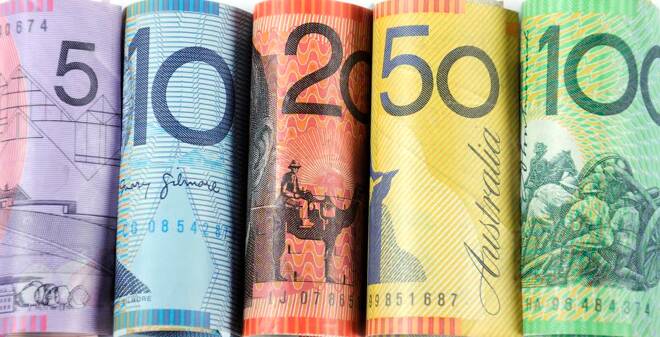Advertisement
Advertisement
The RBA Expands the Term Funding Facility While Holding Cash Rates Steady
By:
The RBA holds cash rates steady while expanding the Term Funding Facility to support a bumpy and uneven economic recovery...
The RBA once more left interest rates unchanged this morning, which had been widely anticipated by the broader market. The Board decided to leave the targets for the cash rate and the yield on 3-year government bonds at 25 basis points.
There was an increase and an extension to the Term Funding Facility, however.
Under the expanded Term Funding Facility, ADIs will have access to additional funding. This would be equivalent to 2% of their outstanding credit at a fixed rate of 25 bps for 3-years.
ADIs will be able to draw on this extra funding until 30th June 2021. This had previously been available until 30th September.
According to the RBA, ADIs have drawn A$52bn under the Term Funding Facility. Today’s move takes the total amount available to circa A$200bn.
The RBA Rate Statement and the Aussie Dollar
From the RBA Rate Statement this morning, salient points included:
Globally
- An uneven economic recovery is underway after a severe contraction in the first half of 2020.
- The future path of that recovery is highly dependent on the containment of the virus.
- Recent spikes in COVID-19 cases and high infection numbers have resulted in a recent loss of growth momentum in some economies.
- By contrast, China’s economic growth has been relatively strong.
Financial Markets
- Volatility is low and the prices of many assets have risen substantially despite the high level of economic uncertainty.
- Bond yields remain at historically low levels.
- The U.S Dollar has depreciated against most currencies.
- Coupled with higher commodity prices, the Aussie Dollar has appreciated to its highest level in early 2-years.
Australian Economy
- The economy is going through a very difficult period and is experiencing its largest contraction since the 1930s.
- While a recovery is underway, it is likely to be both uneven and bumpy. The coronavirus outbreak in Victoria is having a major effect on the Victorian economy.
- While employment increased in June and July, unemployment and underemployment remain high.
- In the Bank’s central scenario, the unemployment rate rises to around 10% later in 2020. This is then expected to gradually decline to around 7% in 2-years’ time.
- Wage and price pressures remain subdued and this is likely to continue for some time.
- Fiscal and monetary support will be required for some time given the economic outlook and the prospect of high unemployment.
The Board
- Is committed to doing what it can to support jobs, incomes, and businesses in Australia.
- Its actions, including today’s extension, are keeping funding costs low, assisting households and businesses.
- The Board will maintain highly accommodative settings as long as is required. Additionally, the Board continues to consider how further monetary measures could support the recovery.
- It will not increase the cash target rate until progress is made towards full employment and it is confident that inflation will be sustainably within the 2-3% target band.
In response to the RBA decision and comments within the rate statement, the Aussie Dollar rose from $0.73989 to $0.74097 before easing back.
At the time of writing, the Aussie Dollar was up by 0.34% to $0.74008.
What Lies Ahead?
As outlined by the RBA, the key to the economic recovery remains containment of the coronavirus.
For the markets, the good news is that there has been the talk of progress towards an effective vaccine.
Avoiding further spikes will be critical, however, to support the economic recovery.
For the Aussie Dollar, consumer confidence and employment conditions will need to continue to improve.
This week, the markets will get a sense of the impact of the COVID-19 on the Australian economy. 2nd quarter GDP numbers are due out on Wednesday. The numbers will give the markets a better sense of whether the RBA will need to deliver more support.
While trade data on Thursday will also be of interest, July retail sales on Friday will be key.
Disappointing numbers will add further pressure on the RBA. According to figures released this morning, manufacturing sector activity had stalled in August. The AIG Manufacturing Index fell from 53.5 to 49.3.
These figures along with stats through the remainder of the week will likely reflect the uncertainty that the RBA refers to.
Additionally, while the RBA did note the fall in the U.S Dollar and Aussie Dollar appreciation, the statement showed little concern. The markets will be looking to see at what level the RBA will become uncomfortable over the strength of the Aussie Dollar, however.
About the Author
Bob Masonauthor
With over 28 years of experience in the financial industry, Bob has worked with various global rating agencies and multinational banks. Currently he is covering currencies, commodities, alternative asset classes and global equities, focusing mostly on European and Asian markets.
Advertisement
